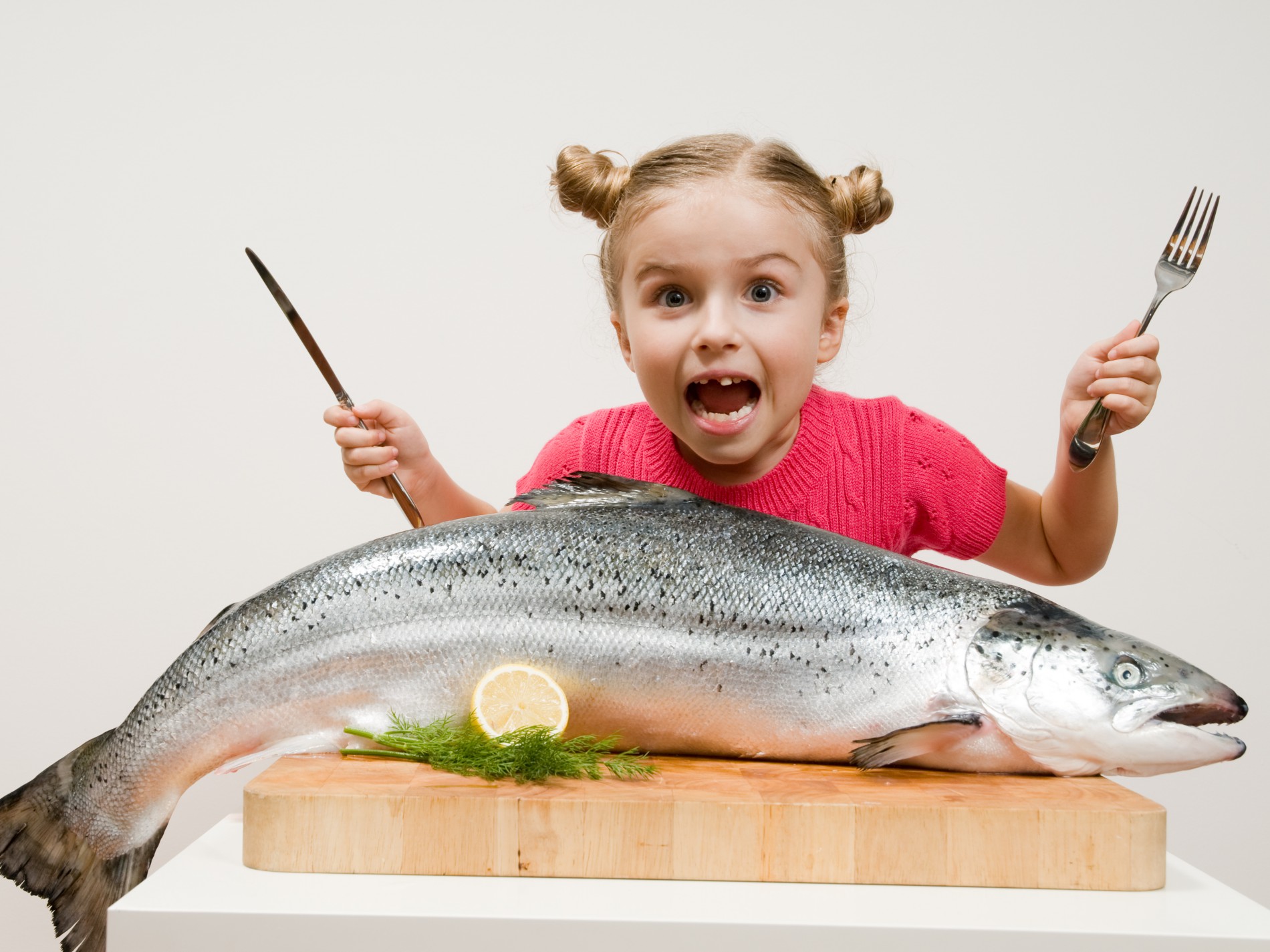Q. Dear Umbra,
I stopped eating fish a few years ago out of concern over sustainability and toxins. I am now a mother and wonder whether to make the same choice for my child. Can you tell me whether it is possible to eat fish safely and sustainably? And, if not, are there other foods that provide similar nutrients?
Isobel
Rochester
A. Dearest Isobel,
Have you ever heard Nirvana’s “Something in the Way“? If Kurt Cobain were in charge of this column, your answer would be this: “It’s okay to eat fish, because they don’t have any feelings.” I’m not qualified to comment on the emotional status of seafood, but I do have a suggested tweak that I think will turn these lyrics into spot-on dietary guidelines: “It’s okay to eat fish — if you choose sustainably managed, low-mercury species in sensible portions.” Kind of has a nice ring to it, doesn’t it?
Undoubtedly, the worldwide fishing industry has some serious sustainability problems. The Monterey Bay Aquarium’s Seafood Watch program provides an excellent overview of these issues, including overfishing, bycatch (the unintentional killing of sea turtles, sharks, and other species that get caught in longlines and bottom trawls), damage to coral reefs, pollution from seafood farms, and the destruction of sensitive mangrove forests. With all these concerns, it’s no wonder you’ve been scared away from fishy dishes.
And then there’s your other valid worry: exposure to toxins, primarily mercury, through eating seafood. Coal plants the world over belch this metal pollutant into the watery ecosystem, where progressively larger creatures ingest it — from little fish to big fish all the way up the food chain to us humans. This is bad news for everyone (mercury is a poison), but it’s especially dangerous for pregnant women and children because it interferes with brain development. So it’s smart to be vigilant on behalf of your kiddo, Isobel.
But these issues are yellow lights, not red ones. It is possible to stock your dinner plate with fish that don’t cause major environmental harm or poison you with mercury. And because fish do supply a bunch of super-healthy nutrients, including protein, iron, and omega-3 fatty acids, it can be a good idea to put them in your menu rotation — especially for young’uns, as those omega-3s in particular support children’s cognition, vision, and immunity, among other health bennies.
So how is a conscientious pescatarian to distinguish between planet-friendly, low-toxin fish and its unsustainable, heavy-metal cousins? Here we’re in luck, as several reputable organizations have put together detailed consumer guidelines for us. The aforementioned Seafood Watch sets a gold standard for choosing sustainable fish; the Marine Stewardship Council certifies fisheries and pastes an eco-label on good choices; and the National Oceanic and Atmospheric Administration’s FishWatch provides shopping guidance as well as recipes and nutrition info for popular species. All three can help lead you to best-practices swimmers, from wild populations caught by hook-and-line techniques to closed aquaculture farms that reduce pollution. And don’t overlook farmed bivalves like oysters, mussels, and clams: Far from contaminating the aquatic environment, raising these guys can actually clean it.
There are guides to low-mercury fish, too. Generally, smaller fish (think sardines and anchovies) will pack less mercury than larger ones (certain species of tuna, swordfish) because the big daddies concentrate toxins from their smaller prey. Our old friends at the Environmental Working Group have even put together a quick reference to fish that hit all the marks of sustainability, mercury levels, and healthy nutrients. Spoiler alert: They are wild salmon, sardines, mussels, rainbow trout, and Atlantic mackerel.
If you decide to keep your life fish-free, you can find non-fishy sources of fatty acids (including canola oil, soybean oil, flaxseeds, chia seeds, and walnuts), but they’re not as nutrient-rich as seafood; you might also turn to fortified eggs, milk, and margarine products, or fish oils and omega-3 supplements. But all in all, Isobel, I think it’s safe for you to invite marine life back to your dining table once in a while.
Now if you’ll excuse me, I’m off to work on my upcoming album of popular song covers adjusted to give sustainable eating advice. Instead of “Pour Some Sugar on Me,” what do you think of “Pour Some Locally Tapped, 100-Percent Natural Maple Syrup on Me … in Moderation”?
Osteichthyely,
Umbra



